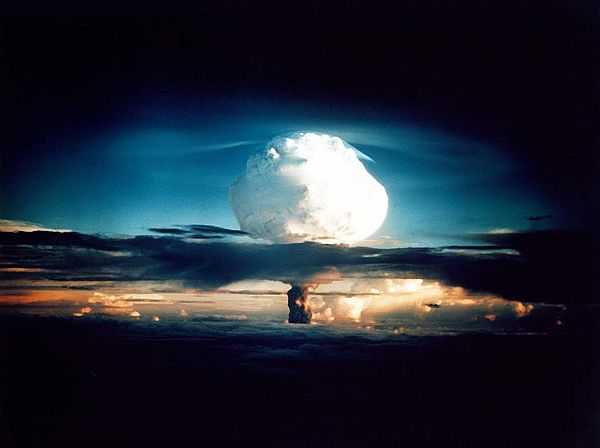 The rise of Mike Pence to the vice presidency of the United States of America was an improbable one (allegedly due to a flat-tire). Is his failure to achieve the presidency, part of an improbably “unusual streak in the annals of American history” for Hoosier veeps? Dan Carden notes quite rightly that there have been 4 Republican vice presidents from Indiana in the nation’s history, yet not one of them has scored a second term, much less ascended to the role of POTUS. Deflating for the GOP yes… but is this improbable?
The rise of Mike Pence to the vice presidency of the United States of America was an improbable one (allegedly due to a flat-tire). Is his failure to achieve the presidency, part of an improbably “unusual streak in the annals of American history” for Hoosier veeps? Dan Carden notes quite rightly that there have been 4 Republican vice presidents from Indiana in the nation’s history, yet not one of them has scored a second term, much less ascended to the role of POTUS. Deflating for the GOP yes… but is this improbable?
We can calculate that.
Even if you have completely forgotten high school math, you might vaguely remember something about “combinations and permutations”, colored balls with urns, and so on. Carden’s question about Vice Presidents is in the realm of binomial probability.
 What might have been thought to be a simple fair-toss-of-a-coin issue was studied very deeply by 17th Century mathematician and philosopher Blaise Pascal. It was made more complicated still by Bernoulli out of concern that the coin might be weighted (and thus unfair).
What might have been thought to be a simple fair-toss-of-a-coin issue was studied very deeply by 17th Century mathematician and philosopher Blaise Pascal. It was made more complicated still by Bernoulli out of concern that the coin might be weighted (and thus unfair).
What is the probability of heads in a fair coin toss? It’s 50% of course. What is the probability of getting heads, then tails, then heads, then tails, then tails again (H, T, H, T, T). Each outcome is 1/2, so 50% x 50% x 50% x 50% x 50% is actually a small number (~3%). Much smaller than intuition tells you the probability really should be.
That 3% is actually how often you expect to get exactly that sequence H, T, H, T, T. No individual flip of the coin, heads or tails, is surprising. Each flip of of a coin can come up heads each time. There are 32 ways to flip a coin 5 times, and no exact series is more or less probable than another (I recommend Tom Stoppard’s treatment… seriously. ).
 More likely, you are interested in compound probability or cumulative probability. For example, rather than getting that particular sequence of heads and tails, “What is the probability of getting heads twice?” For 5 tosses of a (fair) coin, the probability of getting heads twice is 31%, not 3%. Still, that’s just the probability of getting heads exactly twice. You might want to know what is the probability of getting heads at least twice (i.e., twice, three times, four times or all five times) and the answer to that is much higher: 81%.
More likely, you are interested in compound probability or cumulative probability. For example, rather than getting that particular sequence of heads and tails, “What is the probability of getting heads twice?” For 5 tosses of a (fair) coin, the probability of getting heads twice is 31%, not 3%. Still, that’s just the probability of getting heads exactly twice. You might want to know what is the probability of getting heads at least twice (i.e., twice, three times, four times or all five times) and the answer to that is much higher: 81%.
There are formulas for this, but even I glaze-over when I see formulas on a page. So just search for binomial probability calculators on-line and have fun with this sort of thing on your own. Like I did with Pence.
What then was the probability, or improbability, of Mike Pence whiffing on the presidency given that he is from Indiana? First, we need to know the probability that any vice president makes it to a second term or to the White House. Unlike a coin-toss, it’s far from 50%. Of the 48 Vice Presidents, only 14 have been elected to the presidency. That’s more like 29%, not 50%. The number of vice presidents who have made it to a second term is even smaller: 12 if you include Spiro Agnew. So, 25%.
Out of 4 Republican Veeps from Indiana, that none would have a second term scores a probability of 32%. That none ever scored the Oval Office works out to about 25%. This is not unusual at all. We scientists tend to get excited about observed effects being significant (like whether a vaccine works) only when the probability of it happening by chance is less than 5%.
Maybe this is not just about Republicans picking Hoosiers like Pence and Quayle as running mates. Altogether there have been 6 vice presidents from Indiana (whether that is a lot, I will address below). The chances that none of them would make it to the White House, if there’s only a 29% chance anyway, is about 12%. That’s about 1 in 8. Low-ish but not unexpected. No special explanations of bias or curses are needed.
We can calculate that too
So far, I presumed that the 29% chance we see across all Veeps is a good estimate of the probability than any Veep will get the promotion. If the odds were even, the failure of all 6 Indianan Veeps in history failing becomes very improbable (~1%). That would mean that America really doesn’t want Republican vice presidents from Indiana to take the White House!

If the odds were even, the probability of 14 or fewer historical vice presidents across the country failing at this is really low (less than 3%). There’s definitely a bias. We can safely say that any VPs chances of getting the presidency really are way worse than a coin-toss. This is not about Indiana. It doesn’t matter if it was Pence or Gore, the odds are stacked against all VPs, not just Republican vice presidents from Indiana. Americans do not like to elect them to the Presidency.
Yet, fully 6 VPs have been from Indiana?! What’s the probability of that? There are 50 states to choose from every 4 years.  This is no longer a two-sided coin. It’s like rolling a 50-sided Dungeons and Dragons die 48 times and coming up “19” six times.
This is no longer a two-sided coin. It’s like rolling a 50-sided Dungeons and Dragons die 48 times and coming up “19” six times.
It’s easy enough to figure this out, too. Getting the number “19” in a single roll has a 1 in 50 chance (2% or 0.02). That’s already improbable. Getting that exactly 6 times out of 48 rolls of that die is 0.003362 (3 tenths of 1 percent). Let’s be fair though, and say that we really mean 6 or more times (each of which adds only tiny bits more) which comes to 0.00382 (call it 4 tenths of 1 percent). Six Veeps from Indiana is really very unexpected. Worth betting on. I’d wager $1000 on there being another Vice President from Indiana in my lifetime.
 Indeed, this was what Pascal was busy with… betting and games of chance. Antoine Gombaud who preferred to be called “Chevalier de Méré”, challenged Pascal. One of his “salons” concerned a gambling problem with rolls of dice and interrupted games. That’s how this started. “Roulette” is a French and, yes, Pascal invented that too.
Indeed, this was what Pascal was busy with… betting and games of chance. Antoine Gombaud who preferred to be called “Chevalier de Méré”, challenged Pascal. One of his “salons” concerned a gambling problem with rolls of dice and interrupted games. That’s how this started. “Roulette” is a French and, yes, Pascal invented that too.
Or, we could just roll the dice.
The 50-sided die was for the number of States, and the number “19” for Indiana, the 19th state. Since Indiana did not become a state until 1816, 7 presidential elections had passed and 48 rolls of the die is wrong. Obviously too, when Indiana became a state, there were only 19 states, not 50. So in that first election, the die only had 19 sides, not 50. The number of faces on the die has changed over time.
There’s a formula that you could construct that specifies the probability for each year of there being an Hoosier VP, and then aggregate the cumulative probabilities across the 41 election cycles that Indiana’s been a state all while correcting for the number of states (remembering that it dropped from 32 states in the Union to to 25 in 1864), and which would account also for differences in population sizes for each state at each of the 41 election cycles. It would be a very long and complicated formula. 🙁
Or we could do this by virtually throwing the dice.
Your laptop… your smart phone… both have the computational ability to answer this by running a simulation several thousand times given all of the parameters described in the last paragraph. You could even do it in Excel if you felt like it with randnumber() & countif(). Just don’t try to use more than 1,048,576 rows or 16,384 columns!
 Running a simulation like this over and over is called a Monte Carlo algorithm. Monte Carlo methods exploded on to the scene in the 1940s at Los Alamos where Stanislaw Ulam developed Markov Chain Monte Carlo algorithms while designing thermonuclear weapons testing. Like this one that he made.
Running a simulation like this over and over is called a Monte Carlo algorithm. Monte Carlo methods exploded on to the scene in the 1940s at Los Alamos where Stanislaw Ulam developed Markov Chain Monte Carlo algorithms while designing thermonuclear weapons testing. Like this one that he made.
Today, Monte Carlo methods are used in every field of science and economics, everywhere. It’s named after Monte Carlo, Moncao, because of gambling but not because gambling probabilities are like the probabilistic nature of neutron flux. Los Alamos needed a secret code name. Ulam chose “Monte Carlo” because his uncle Michel had a gambling problem and was always blowing his wad in Monaco.
So, I set up 1000 replicates of the 41 presidential elections in which Indiana has been a State. It suggests (in the blink of an eye) that 6 VPs on the tickets in that time is truly a very unlikely outcome. I found 1 in 1000. If you wanted to know that number more precisely you’d have to run 10,000 simulations. I am satisfied that it’s unlikely.
So what about Carden‘s observation?
What is improbable is that there have been 6 vice presidents from Indiana in 41 presidential elections. However, that none has ever had a second term or made it to the presidency is actually just to be expected and constitutes no significantly “unusual streak in the annals of American history”.
Science and math are ways of interpreting the world. Ways of making it more understandable and less scary. Pence was never likely to become President.
ASIDE: In researching this, I discovered that there are no term limits on the vice presidency. Theoretically, a despot could be Veep for Life, putting a series of puppet Presidents in a figurehead position “above” him. And historical probabilities being what they are, it would be a “him” not a “her”.

